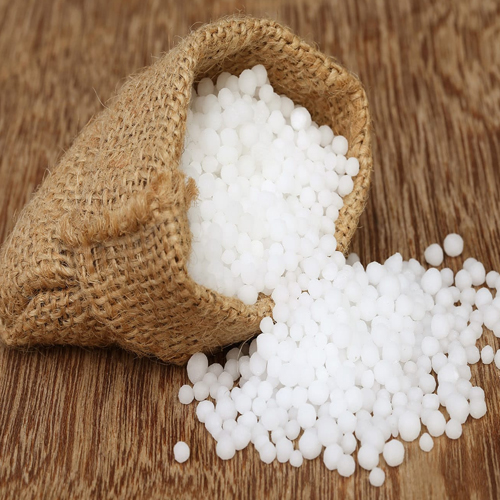Why Choose Us?
Our satisfaction means to us We want to build a relationship with you, and not just a transaction. We want you to have a memorable experience through our entire interaction, and we strive to make that happen
Available 24/7
Creative ideas
Customer Focused
Fast Delivery

Quick Enquiry

Fill out the form, Our Team will contact you for further details.




Urea, also known as carbamide, is an organic compound with the chemical formula CO(NH2)2. It is a colorless, odorless solid that is highly soluble in water and is considered practically non-toxic. When dissolved in water, urea is neither acidic nor alkaline. The introduction and scientific invention of urea marked a pivotal moment in the history of agriculture, leading to significant advancements and transformations in the field.
Urea N46%, with its high nitrogen content, is the world's most common nitrogen fertilizer and has been extensively used across agricultural lands worldwide. This revolutionary development in agriculture has resulted in unprecedented growth in both crop production and prosperity. Urea is unique in that it is neutral in pH and can adapt to a wide range of soil types.
Urea is not just a chemical fertilizer; it also occurs naturally as a waste product when proteins are metabolized in humans, as well as in other mammals, amphibians, and some fish. This multifaceted compound is widely utilized in the agricultural sector, serving as both a fertilizer and an animal feed additive.
In recent years, urea has gained prominence as a superior alternative to ammonium nitrate, achieving remarkable production records. This white, crystalline solid is a compound mixture of multiple nutrients and contains 46% nitrogen. Farmers have recognized the profound impact of urea on their agricultural success during the agro revolution.
Urea's nutrient composition enriches the soil's nutrient content, promoting plant growth and enhancing agricultural productivity. With more than 90% of global industrial urea production allocated for use as a nitrogen-release fertilizer, urea has become a cornerstone of modern agriculture.
Urea is particularly advantageous for several reasons:
Superior Nitrogen Content: Urea has one of the highest nitrogen contents among commonly used solid nitrogenous fertilizers.
Low Production Cost: Its source is natural, making it a cost-effective option.
Non-Flammable and Risk-Free Storage: Urea is a stable and safe product to store and transport.
Wide Application Range: It can be used for all types of crops and soils, making it versatile in agriculture.
Neutral pH: Urea is pH-neutral and does not harm crops or soil.
In 2022, the potential supply of urea fertilizers is expected to reach 197 million metric tons. Increasing crop prices and favorable weather conditions have led to rising demand for fertilizers, particularly in South Asia and other major agricultural regions.
Urea's impact on agriculture has been profound, and its widespread use continues to drive advancements in crop production and sustainability.